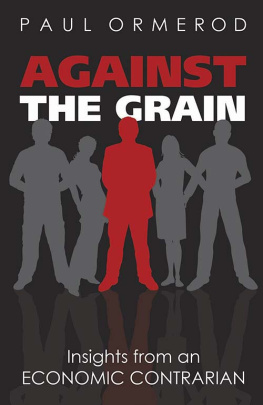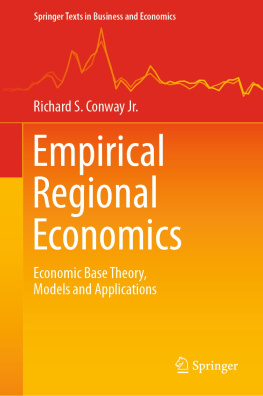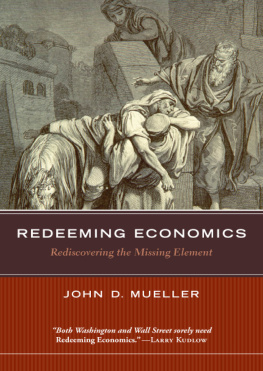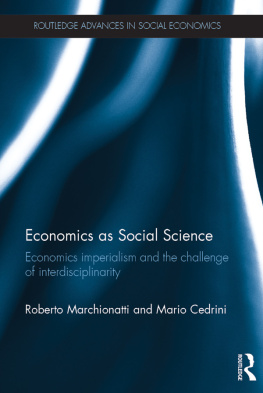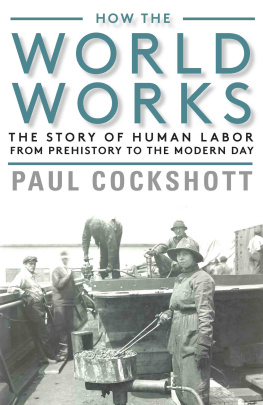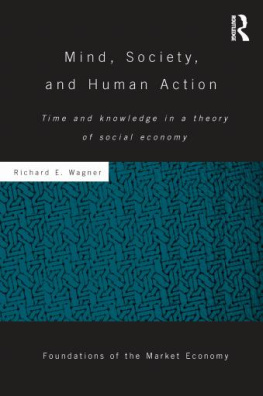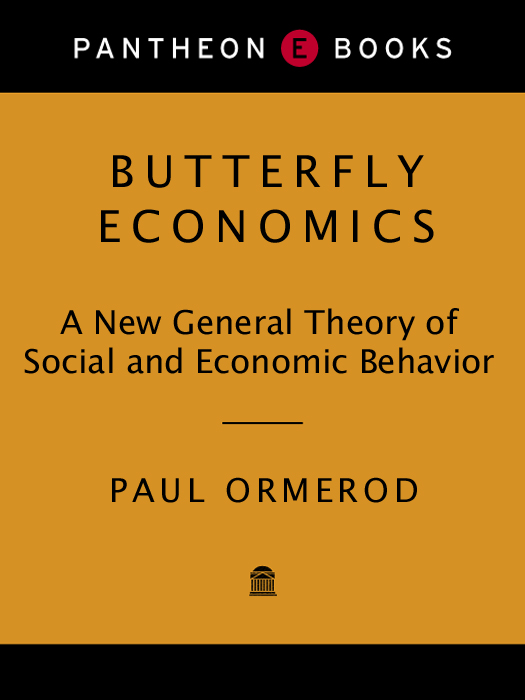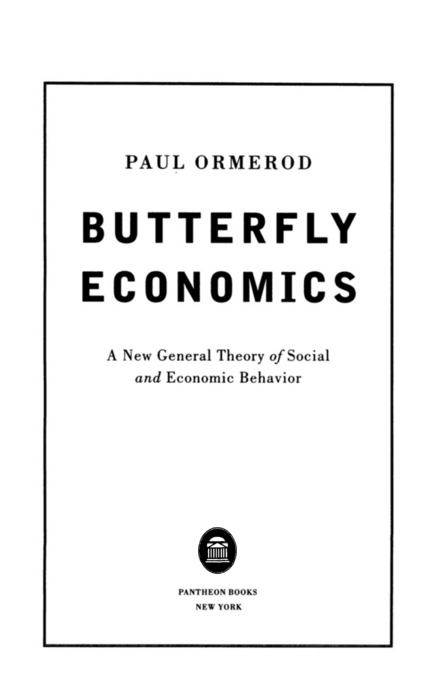Also by PAUL ORMEROD
The Death of Economics
Copyright 1998 by Paul Ormerod
All rights reserved under International and Pan-American Copyright Conventions. Published in the United States by Pantheon Books, a division of Random House, Inc., New York. Originally published in Great Britain by Faber and Faber Limited, London, in 1998.
Pantheon Books and colophon are registered trademarks of Random House, Inc.
Library of Congress Cataloging-in-Publication Data
Ormerod, Paul.
Butterfly economics : a new general theory of social and economic behavior / Paul Ormerod.
p. cm.
eISBN: 978-0-307-81941-3
1. Economic policy. 2. EconomicsSociological aspects. I. Title. HD87.076 2000 338.9dc21 99-29095
Random House Web Address: www.randomhouse.com
v3.1
CONTENTS
PREFACE
My previous book, The Death of Economics, was first published in 1994. My aim was to provide a critique of conventional economics which was accessible to general readers. Economics occupies a dominant position in public policy around the world and, having trained as a professional economist, I felt that its secrets should be more widely shared. Judging by the response to the book around the world, I would like to think that this aim was met. A secondary objective was to suggest how economics could be developed to give a better understanding of how the world actually operates. The study of human societies and economies is of great importance, and it is incumbent upon critics of orthodoxy to advance alternative ways of making progress.
Butterfly Economics contains the development of my thinking over the past few years. Again, it is addressed primarily to members of the general public. Economic and social issues affect everyone, and it is important for all informed citizens to reflect upon them.
An argument which I made nearly a decade ago is that conventional economics is mistaken when it views the economy and society as a machine, whose behaviour, no matter how complicated, is ultimately predictable and controllable. On the contrary, human society is much more like a living organism a living creature, whose behaviour can only be understood by looking at the complex interactions of its individual parts. It is this concept and its implications which form the underlying theme of Butterfly Economics.
My fellow economists although I prefer the term political economists which Adam Smith and the founding fathers used to describe themselves may take more comfort in this book than in my previous one. A motif running throughout, and primarily addressed to them, is that conventional economics is a special case of the more general class of models which it is now feasible to build. In orthodox economics, individuals are not permitted to affect each others behaviour directly, and in circumstances where this is a good approximation to reality, this offers a powerful explanation of what goes on. But such circumstances are rather limited, and it is more usually the case that people or companies are influenced directly by what others do. This leads to a much more complex world, but one which offers a better description of reality. Economics and the other social sciences will, I believe, eventually adopt this model.
Throughout Butterfly Economics, a contrast is made between conventional, machine-like ways of analysing problems, and the more biologically oriented concepts which I advance. It is important to make such comparisons, but the process of so doing can occasionally demand some effort on the part of the reader. This is particularly so with , which discuss the crucial concept of the business cycle. These are probably the hardest chapters for the general reader, but are in a number of ways the most important of the book. For they show how viewing the economy as a living creature enables progress to be made in understanding the business cycle, an integral feature of all market economies and one which conventional economics finds particularly hard to explain satisfactorily.
I am grateful to a number of people for encouragement and discussions which have helped to develop the ideas of this book, and in particular to Michael Campbell, Robin Marris, Bridget Rosewell and Bob Rowthorn. I have also been stimulated for a number of years by the work of Richard Goodwin, who sadly died in 1997. Julian Loose and his colleagues at Faber and Faber have once again provided valuable editorial support.
Paul Ormerod
London and Wiltshire, July 1998
INTRODUCTION
The conventional ways of thinking in the social sciences, and in economics in particular, offer at best a partial and at worst a misleading view of how the world operates. In essence, the world is seen as a machine. The machine may be very complicated, but in principle it can be understood completely, and the consequences of using it in various ways can be predicted. A lever pulled here or a button pressed there will have entirely predictable consequences.
The failure of such conventional thinking to explain events can be seen each Christmas. Whether it is Buzz Lightyear or Ninja Turtles, Teletubbies or Cabbage Patch dolls, the level of demand for the toy which becomes the ne plus ultra of every childs Christmas stocking almost invariably runs far ahead of the supply. Shops are stripped of all their stocks, and the toy becomes simply unavailable. Firms appear to be congenitally incapable of anticipating the level of sales.
In just the same way, enormous uncertainty and difficulty of prediction appear to be inherent in the film industry. Even the existence of major Hollywood stars and a huge advertising budget is no guarantee of success. In contrast, improbable low-budget movies such as The Full Monty and Anaconda the latter being dismissed memorably by a critic as a movie about huge snakes devouring a B-grade cast occasionally become major successes.
Consumer markets such as those for Christmas toys or films raise serious problems for conventional economic theory. In such theory the tastes and preferences of individuals are fixed, and prices are supposed to adjust in a mechanical way to balance out supply and demand. But in the film or Christmas toy industries, when a new release or product is issued, consumers do not know in advance whether they will like it or loathe it. People have to learn what their own preferences are, and the choice of any individual is influenced powerfully by the opinions and actions of others. Popular toys or films become even more popular precisely because they are popular. Hence the enormous differences seen in revenues between the most and least successful films, and the spectacular bursts in demand for a single product which occur almost every year at Christmas.
Conventional approaches to the analysis of the economy and of society must be altered fundamentally if we are to make progress in understanding both how the world operates, and how we might try to change it for the better. Economies and societies are not machines. They are more like living organisms. Individuals do not act in isolation, but affect each other in complex ways.
The title of this book Butterfly Economics emphasizes this fundamental view of society as a living creature, which adapts and learns. The behaviour of the system as a whole can never be understood by mechanistically adding together its component parts: just as a living creature is more than the sum of the individual cells which make up its body, so the economy and society are more than the sum of the individuals who inhabit it. The image of the butterfly also draws upon popular ideas of chaos theory, in which the beating of the wings of a butterfly can in principle cause a tornado on the other side of the globe. The key theme of my book is to take these ideas even further in the practical context of modern economies and societies. These are complex systems which hover on the brink of chaos.


